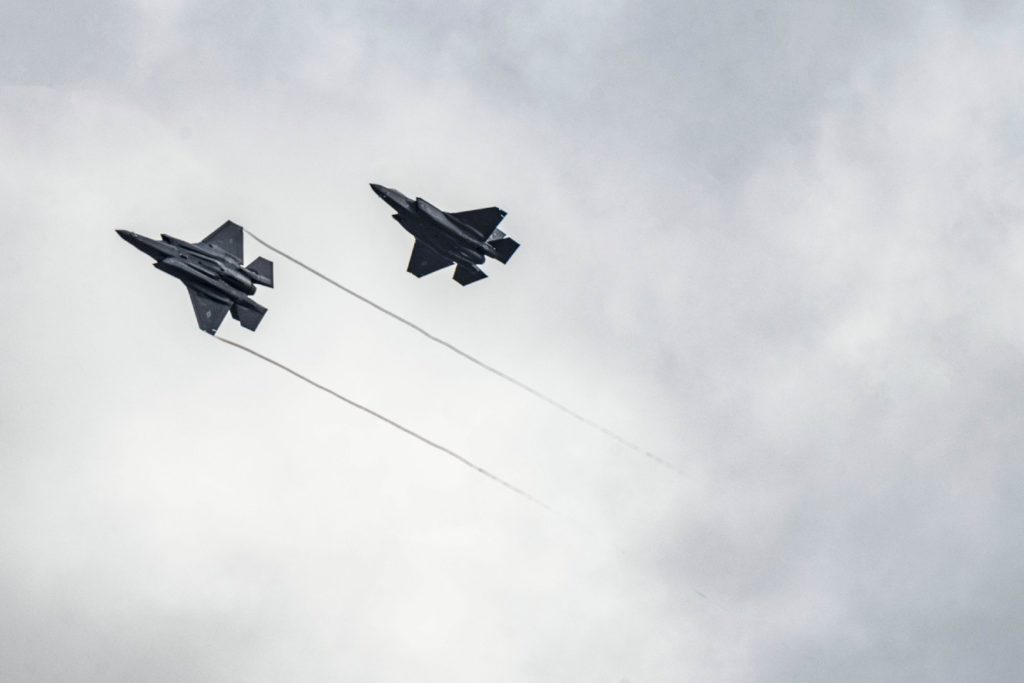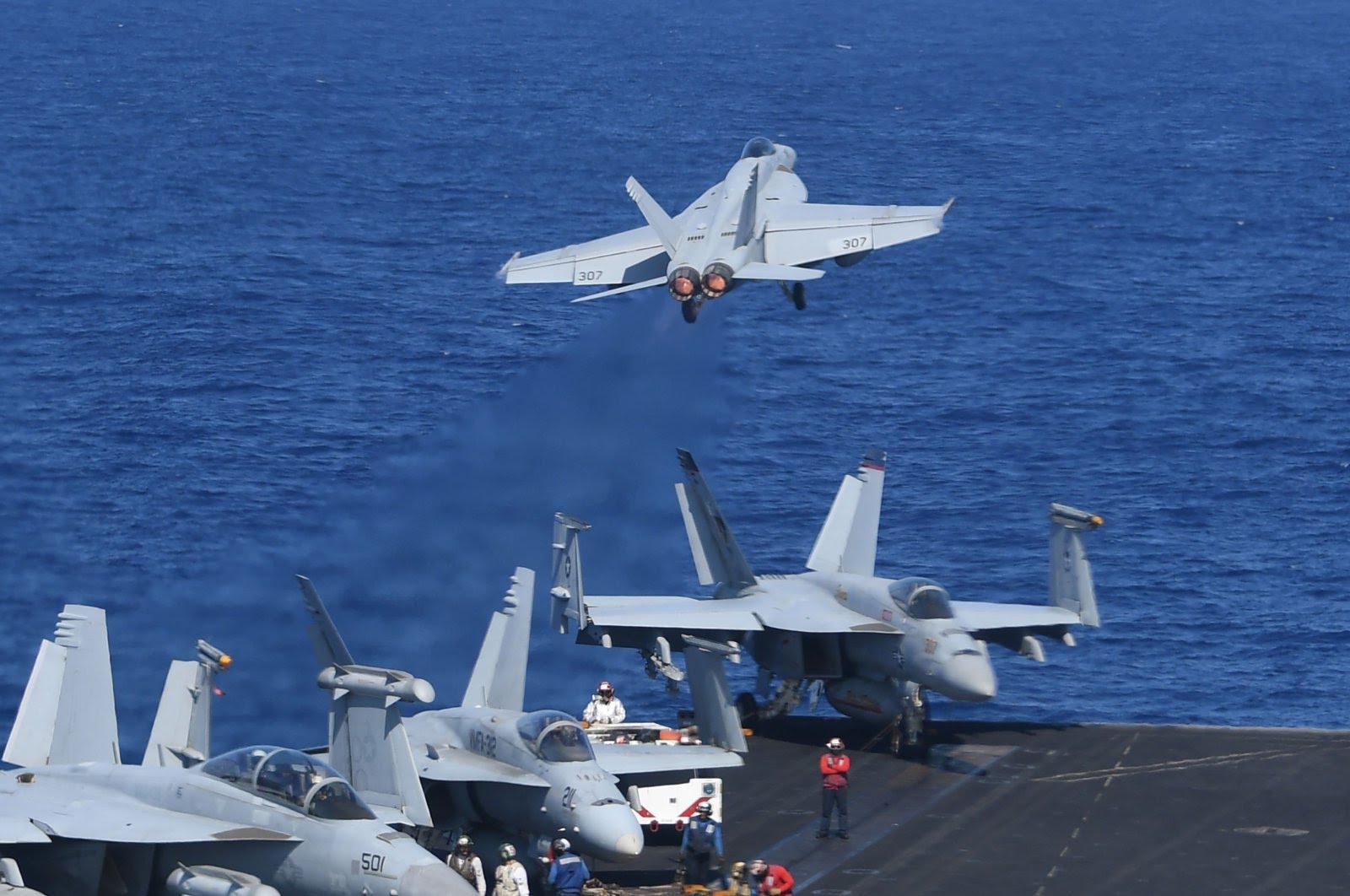By Aaron Stein
After a few days, the Russian invasion of Ukraine has stumbled amid reports of low troop morale and poor logistics. The bungled Russian invasion has given space for different European countries to increase lethal assistance to the Ukrainian government, but this raises the risk of escalation beyond Ukraine. Such overt assistance has prompted Moscow to warn that it would strike any arms convoys inside Ukrainian territory, presumably with airstrikes near the Ukrainian-Polish border. There is a non-trivial risk of conventional escalation that could turn a contained, regional conflict into a much larger regional war. The United States and Europe ought to take action to reduce these risks even as they supply Ukraine with lethal and non-lethal supplies. The West cannot afford to be sanguine about the increased risk of direct conflict with Russia.
The United States and its NATO allies are also flying in close, daily contact with the Russian and Belarusian air forces while NATO troops are deployed in Poland and Romania. Additionally, the primary route for Western weapons to reach Ukraine is via Poland. Western policymakers would be wise to consider that Russian aerospace forces may bomb convoys entering Ukraine from Poland, raising the possibility that they or their munitions could strike targets just outside the border, or even cross into Polish airspace. And as the war moves west, Russian fighters could pursue Ukrainian aircraft fleeing the conflict and, perhaps, violate Polish air space. Hot pursuit of aircraft over international borders invites retaliation, potentially bringing NATO and Russian forces into combat. As such, policymakers ought to be clear and deliberate about how to manage potential escalation spirals.
While both sides have professional militaries that are governed by rules managing these interactions, NATO air forces will almost certainly be operating in ever-closer proximity to Russian aircraft, at the very least. The airspace surrounding Romania and Poland is already congested, with different NATO forces patrolling over the Black and Baltic Seas, as well as in the tri-border area between Belarus, Ukraine, and Poland. To complicate matters further, Ukrainian air assets have fled to Poland and Romania. This means that Soviet-designed aircraft are flying at NATO members’ borders, which requires NATO air forces to identify them and escort them to an appropriate air base. As of now, Russian fighters are not pursuing these aircrafts, perhaps because they have not gained air superiority over Ukraine and are not patrolling in the far west of the country.
If the conflict was to escalate or were NATO to decide to reassess its aims and rules of engagement — perhaps in response to Russian forces pushing westward after taking or encircling Kyiv, driving a tide of fleeing refugees before them — things could get much more dangerous. The risk of spillover from the conflict is an urgent topic for discussion precisely because it could lead to a war involving up to four nuclear-armed powers: Russia, the United States, France, and the United Kingdom. President Vladimir Putin has already put his nuclear forces on “a special mode of combat duty” in an attempt to coerce the Western powers. This order has puzzled observers of Russian nuclear forces, but the signaling appears to be designed to warn NATO to stay out of the conflict, something Biden has pledged to do, rather than signal Moscow’s willingness to use nuclear force first.
While the threat of a nuclear exchange is low, the United States and Europe must grapple with the secondary challenges of military support for Ukraine. Russian warnings have suggested that it intends to limit actions to Ukraine, while the Biden administration has insisted it will not send troops into the conflict. The line, however, is becoming increasingly blurred with the increasing pledges to support the Ukrainian armed forces. Foreign supplied man-portable weapons are already tearing into Russian supply lines and killing Russians in numbers larger than what the Kremlin may have accepted before the invasion, and the networks being set up to supply these weapons could easily be used to support a Ukrainian insurgency indefinitely. How will Moscow react once these arms flows from Poland turn from trickles to torrents, or kill Russian soldiers tasked with patrolling conquered urban areas?
NATO aerial patrols over Poland are well within the engagement zone of Belarusian surface-to-air missiles. In the event of increased tensions, Belarus, under instructions from the Kremlin, could use its surface-to-air missiles to harass NATO fighters, or consider trying to interfere by jamming aircraft. The other, and perhaps most likely, pressure point will be on the supply convoys from Poland into Ukraine. In Syria, Russia used tactical bombers to strike weapons and food supplies from Turkey, as part of its siege campaign of Aleppo. This tactic led to Russian bombing directly on the border. In the air, Russian fighters would also use aggressive tactics to warn away coalition fighters during times of tension (often with little effect), as well as Turkish Air Force fighters patrolling near the border.

Image: U.S. Air Force
If the war drags on, and Western supplies do start to make it into the country in larger numbers, NATO should expect Ukrainian-driven convoys with Western aid to be bombed. Russia has pledged to do this, and it would be wise to take Putin seriously. The Russian strategy now, it seems, is to mass forces to besiege Ukrainian cities. As part of this strategy, one should assume Moscow will attempt to cut weapons supplies to Ukraine, even if those supplies come from Poland.
The Russian military has performed poorly in Ukraine, but there is little reason to do doubt that Moscow can use mass to overcome challenges and take terrain from the Ukrainian military. If this were to happen, Russian military forces could soon link different fronts in the south and east, besiege Kyiv, and be in a position to expand the war in the western part of the country. This reality, while unsettling, requires that the United States and NATO think through the risks of increased Russian activity on the Ukrainian-Polish border. To manage this risk, the United States and NATO should announce that no member-state’s territory will be used to launch attacks against the Russian armed forces. The two sides should also continue to push for increased transparency about air operations on the border with Belarus, decreasing the risk of miscalculation on the border. Finally, the United States and Europe should decide how to respond if convoys are bombed. The easiest answer is to do nothing. However, the pressure to do “something” to protect these convoys is likely to grow, leading to pressures on leaders to extend some sort of protection to aid and weapons convoys that enter Ukraine, even when any such action could be escalatory.
The Russian invasion of Ukraine has gone poorly thus far, but the correlation of forces still slants heavily in Moscow’s favor. And Putin will likely increase the brutality of his campaign, substituting mass for operational cleverness in his effort to subdue Ukraine. The West needs to be prepared for this fact, and the potential that the war will move westward. If Putin chooses this course of action, bringing the two sides into far closer contact, it will be important to manage force-on-force friction to keep the conflict limited and to ensure that it does not spill over into Europe. The United States and NATO can manage escalatory risks, but it is important to think clearly about what is at stake, proactively increase transparency with Moscow about certain NATO actions in Poland, and explore a clear deconfliction mechanism to manage flights in certain air corridors. The West has stood remarkably united in the face of Russian aggression, but all parties involved should be thinking about how to manage spillover from what may turn out to be a longer and bloodier war than Moscow planned for.
Aaron Stein is the director of research at the Foreign Policy Research Institute and is the author of the forthcoming book The US War Against ISIS: How America and its Allies Defeated the Caliphate.
Credit | War on Rock

